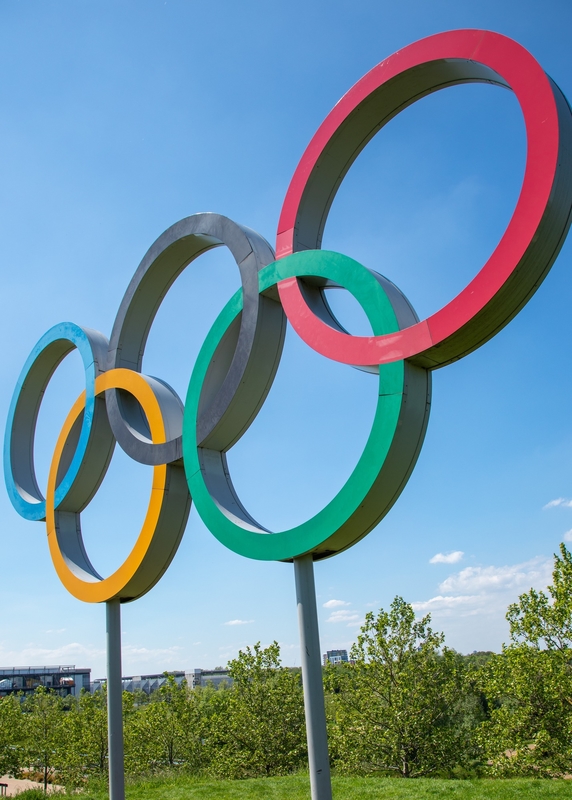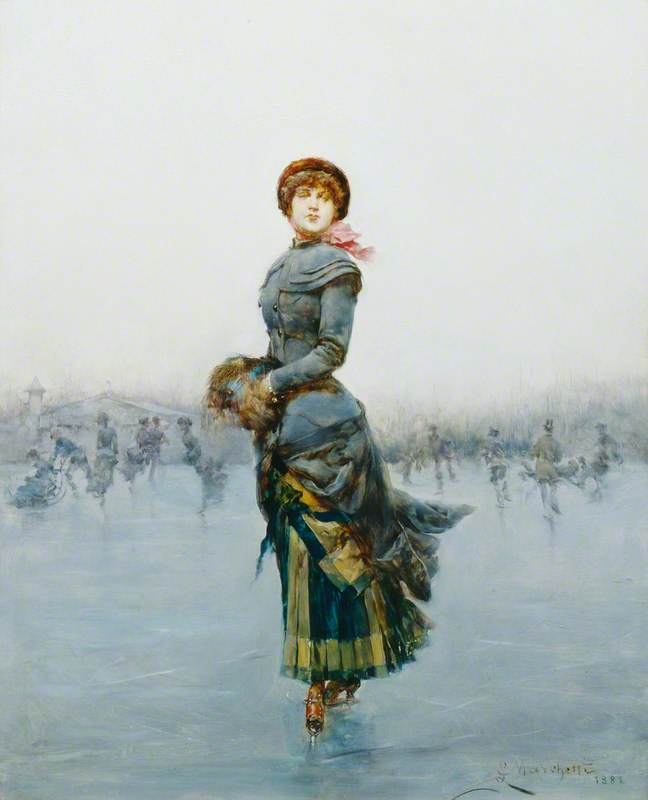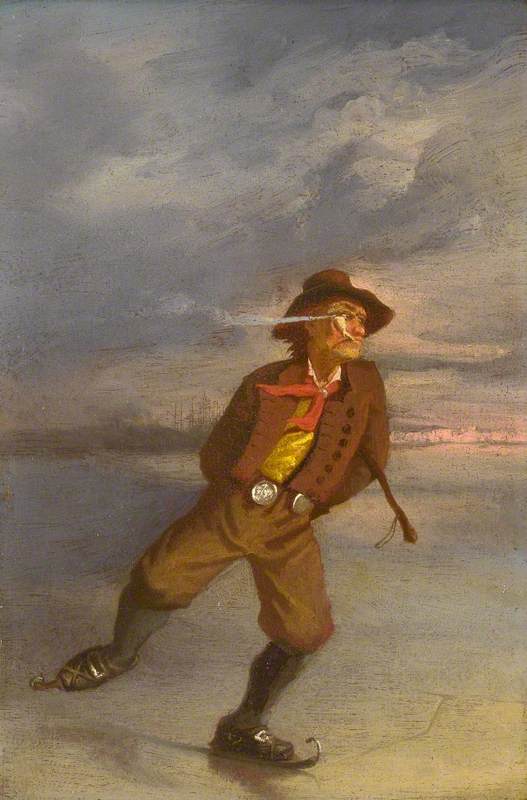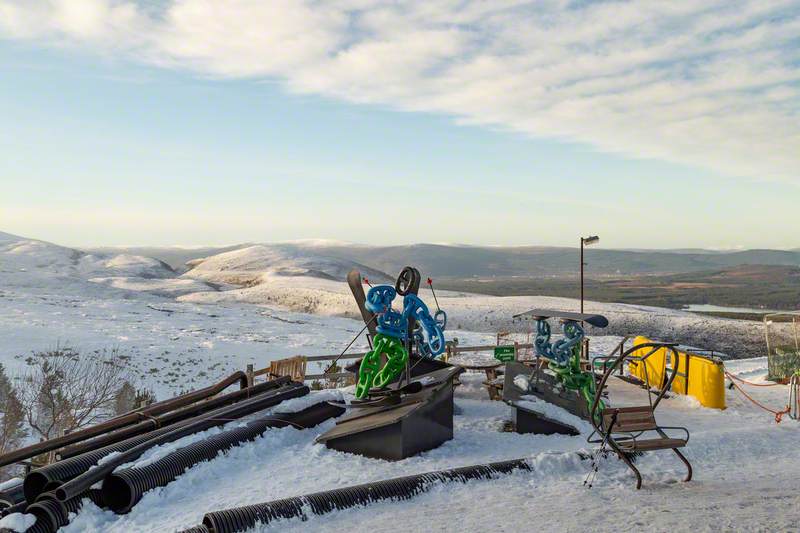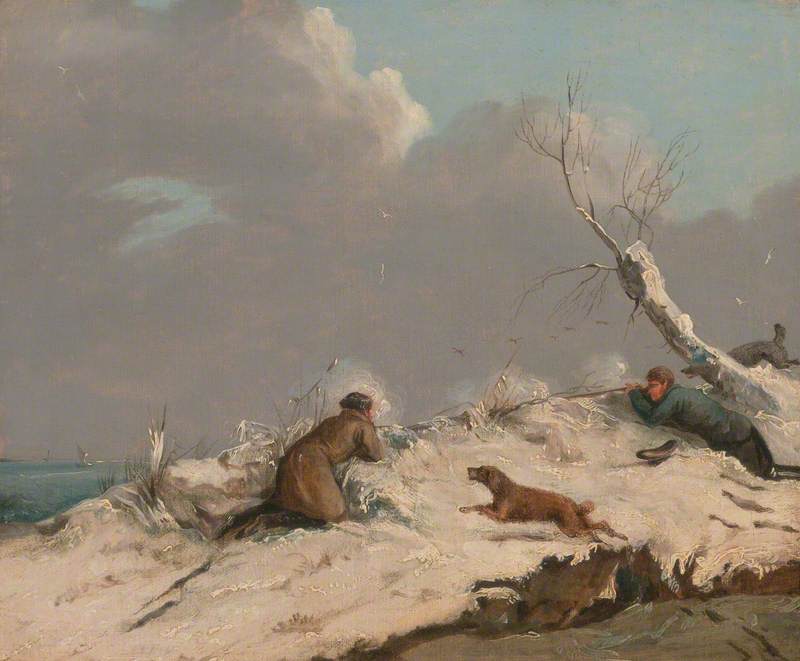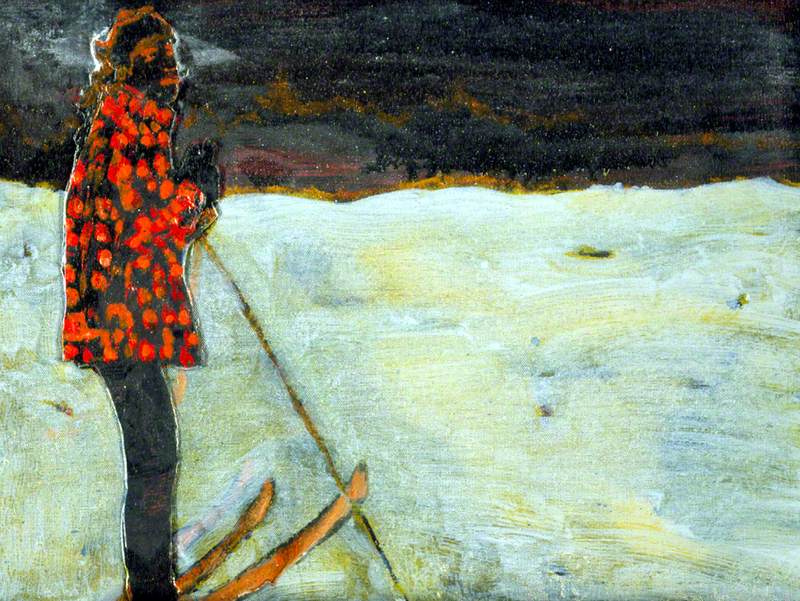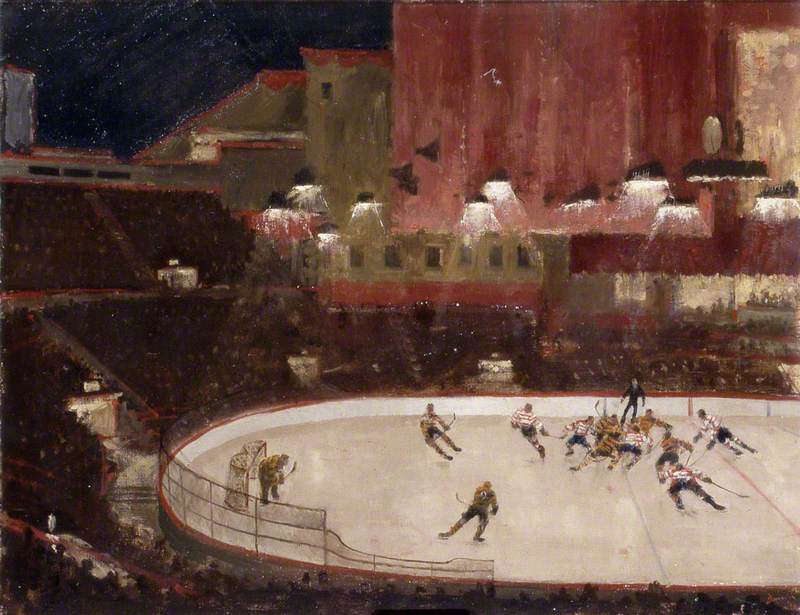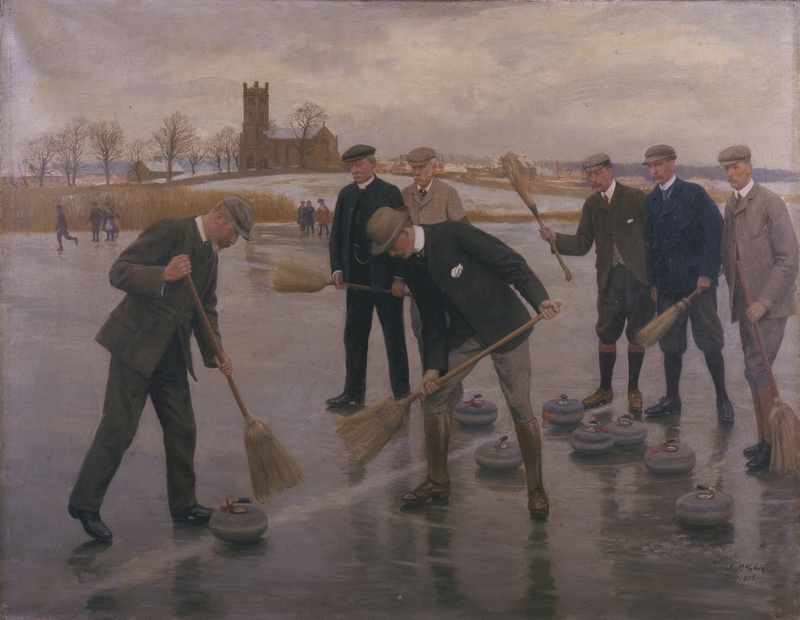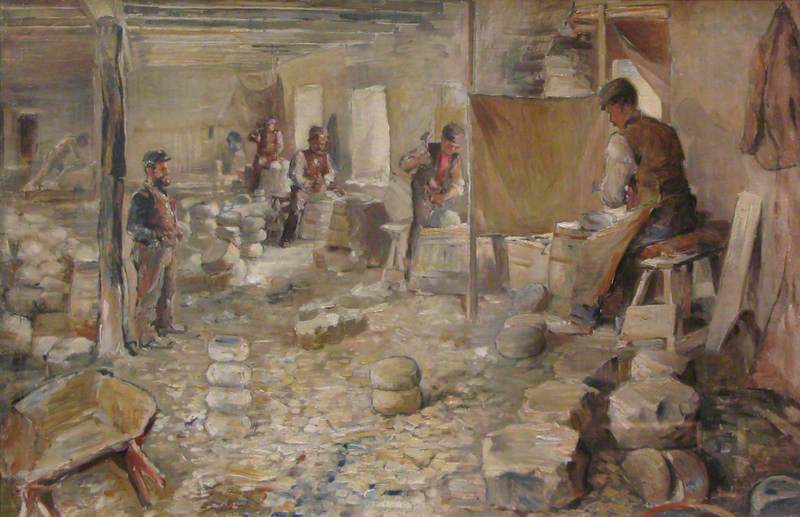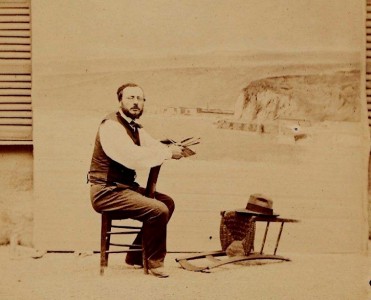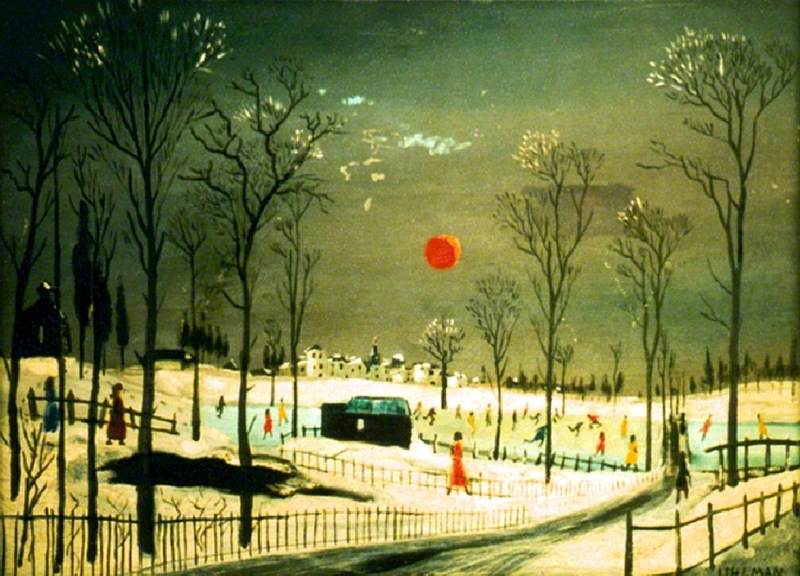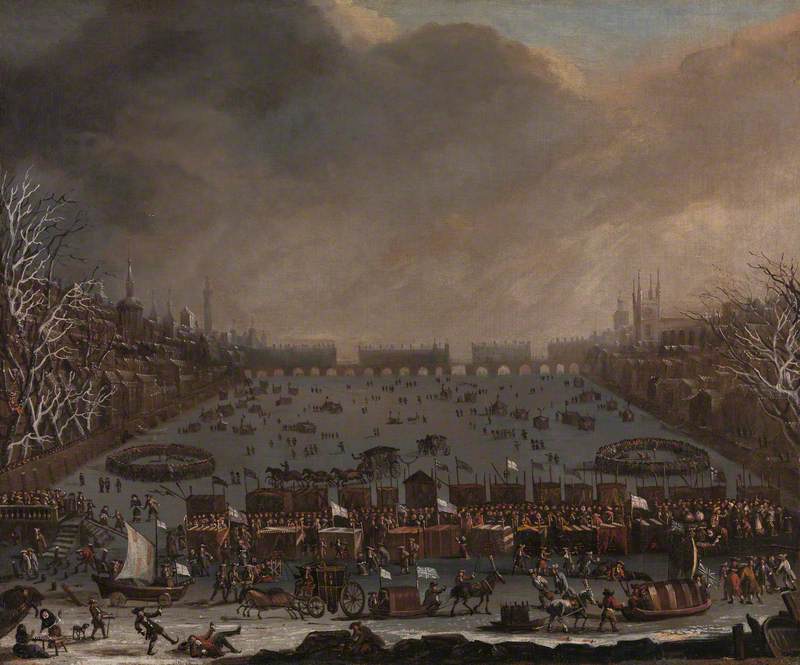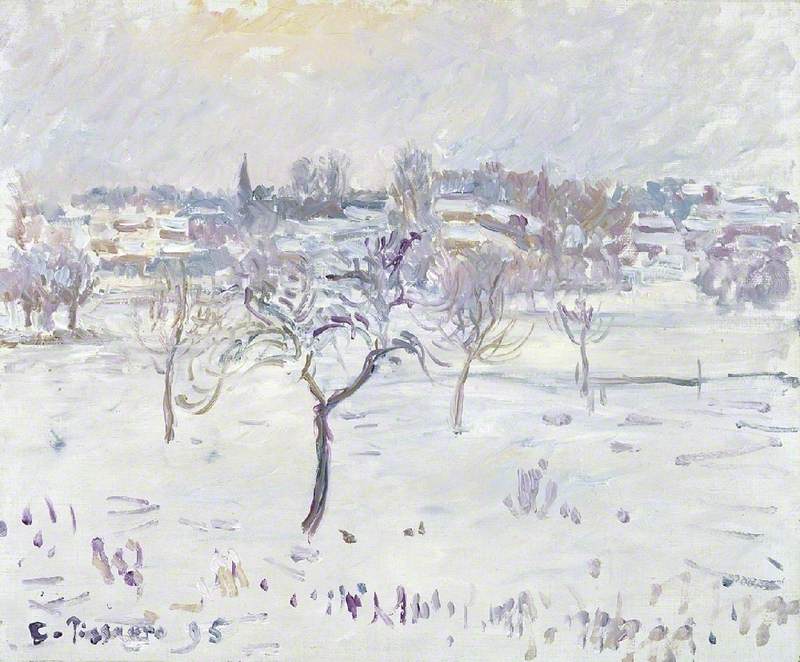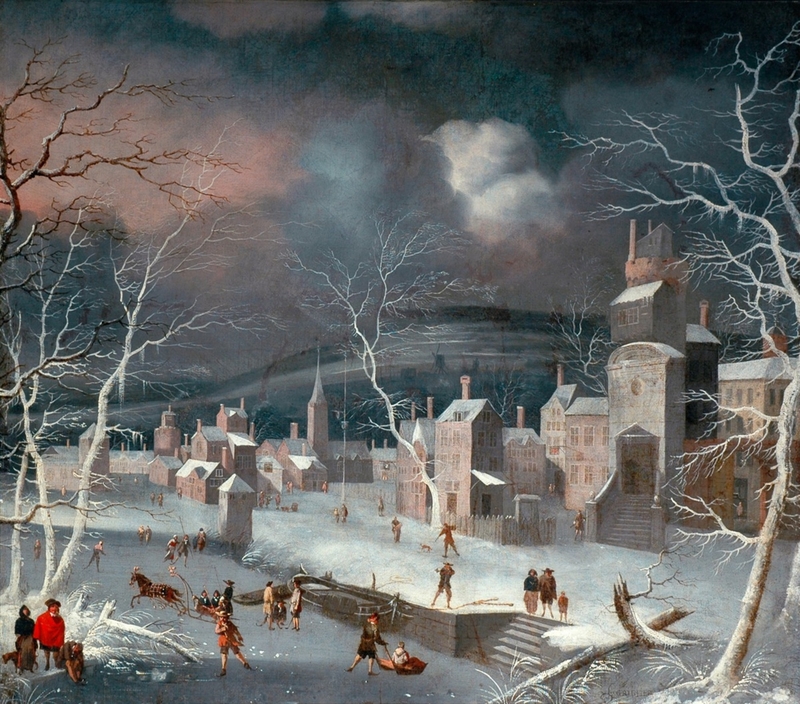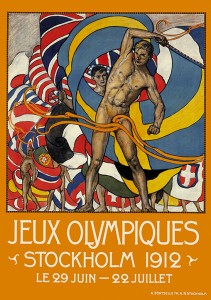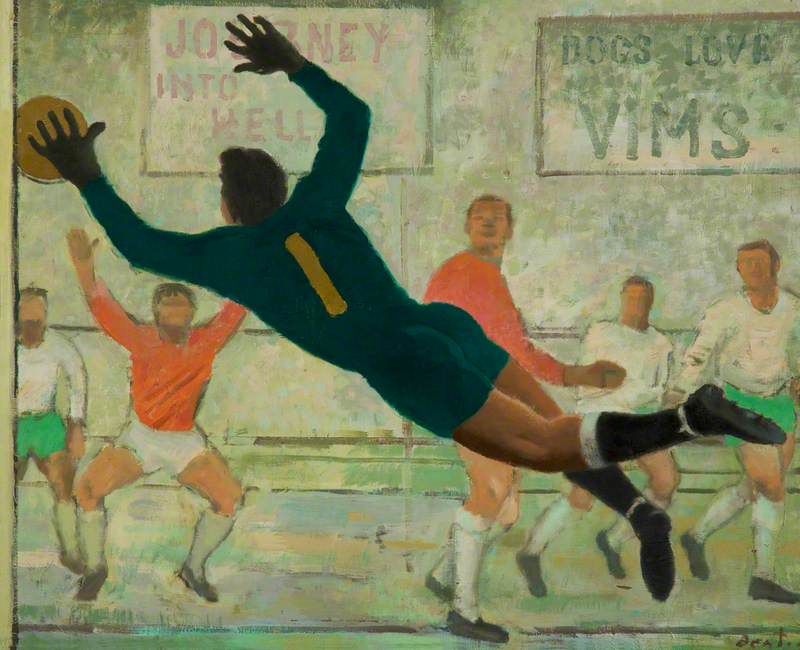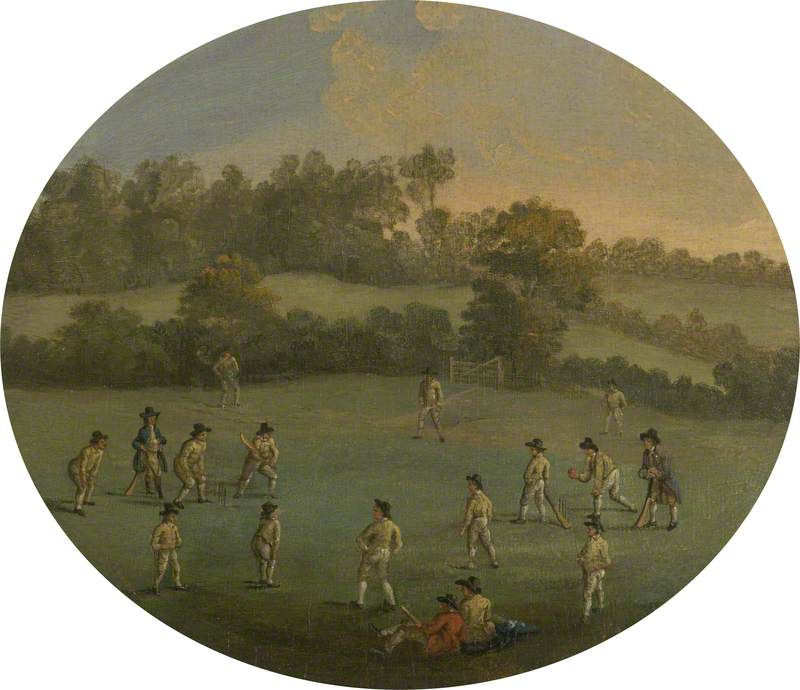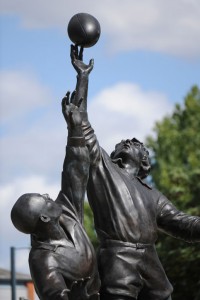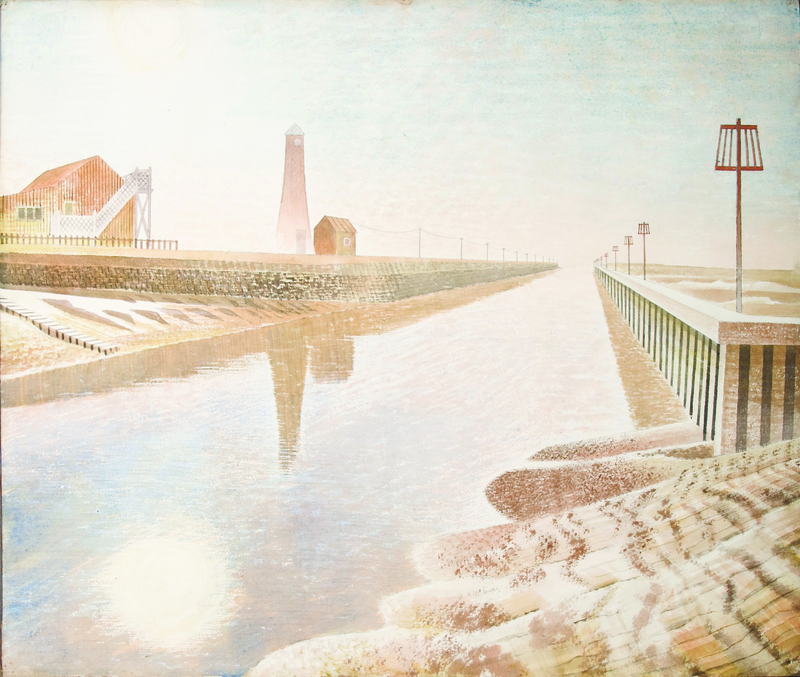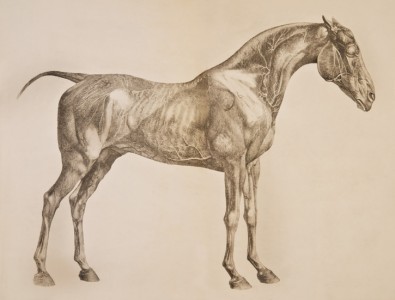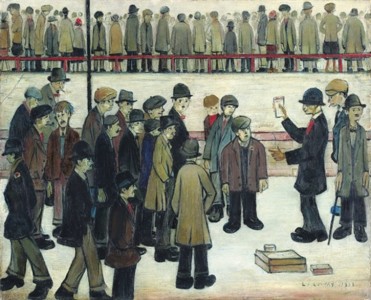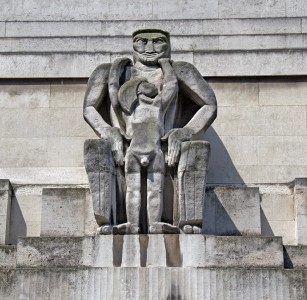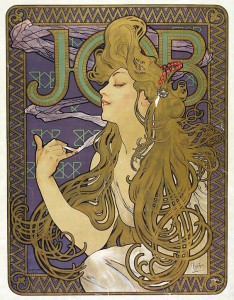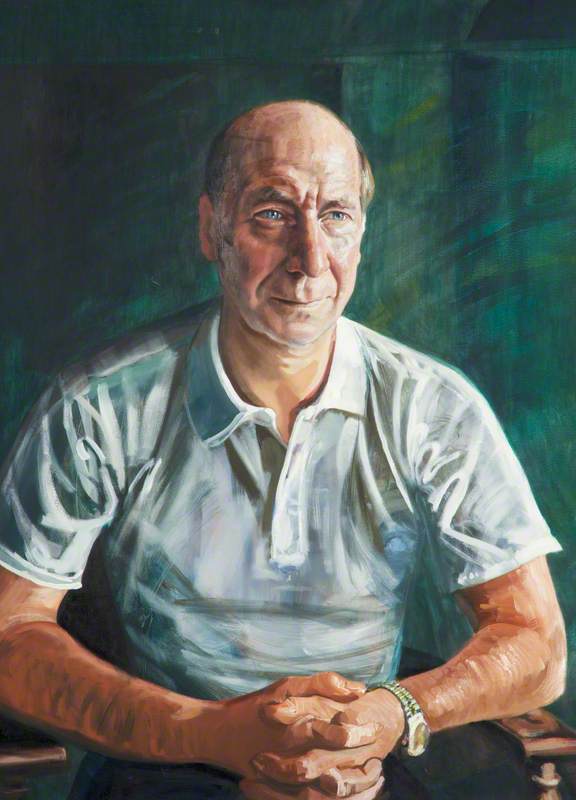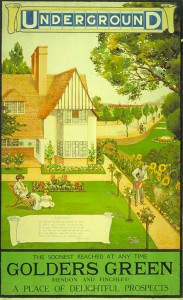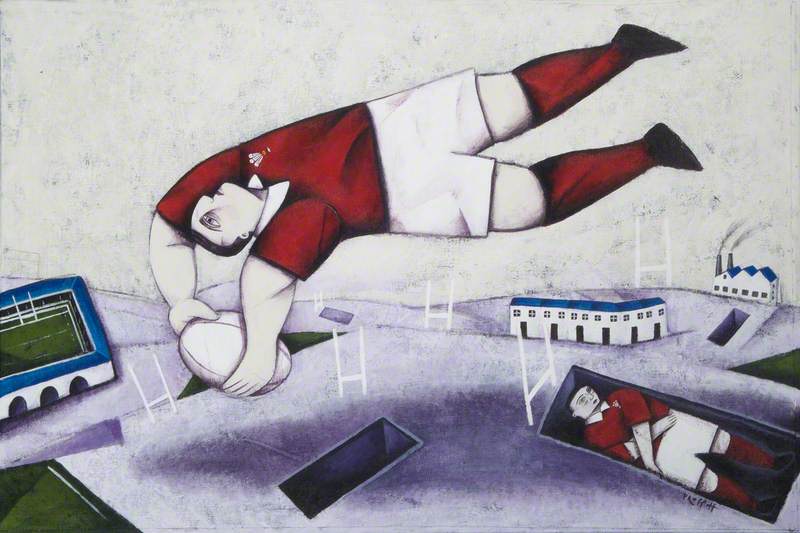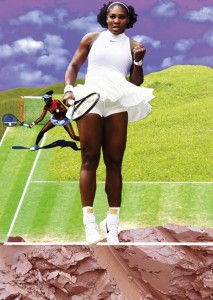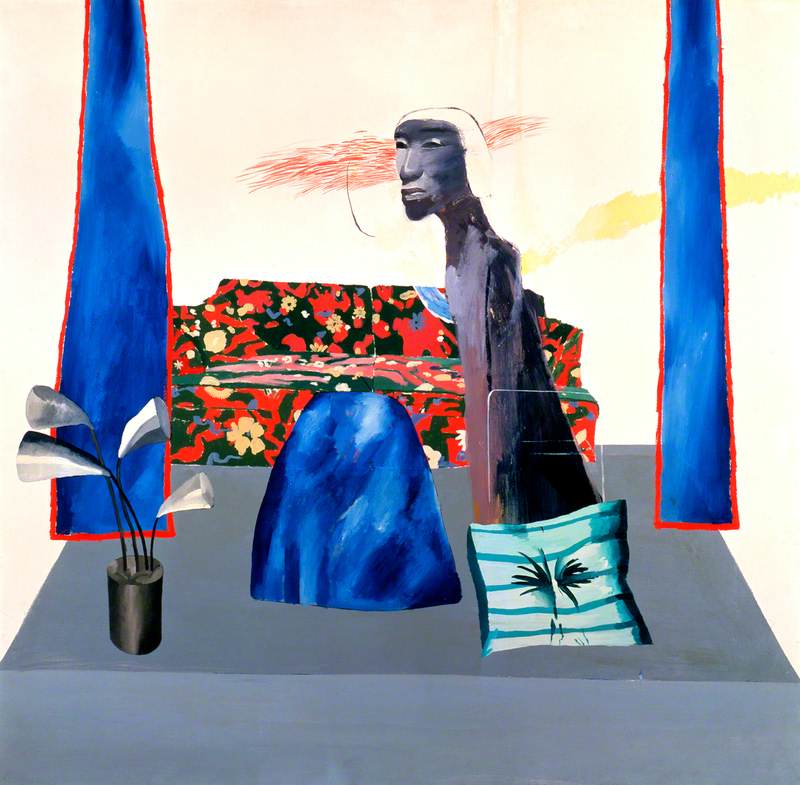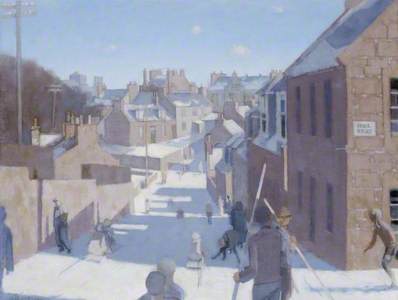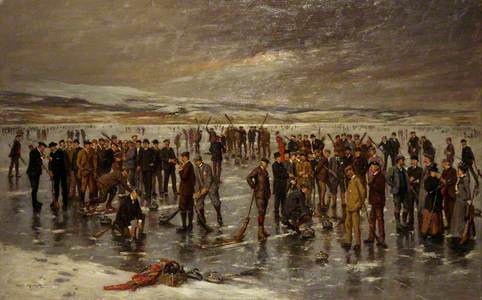Later this week, the 2022 Winter Olympics will begin in Beijing, so it's an ideal time to examine the intersection of winter sports and fine art.
Here are ten Winter Olympic sports that have inspired works of art available on Art UK, spanning seventeenth-century painting to twenty-first-century sculpture.
Figure skating
For many of the millions of television viewers who watch the Winter Olympics, figure skating is the primary attraction: there is no more beautiful sport. And it has seen no more captivating competitors than Torvill and Dean.
Jane Torvill and Christopher Dean, Ice Dancing
1984
Charles J. B. Dodd (1913–1984) 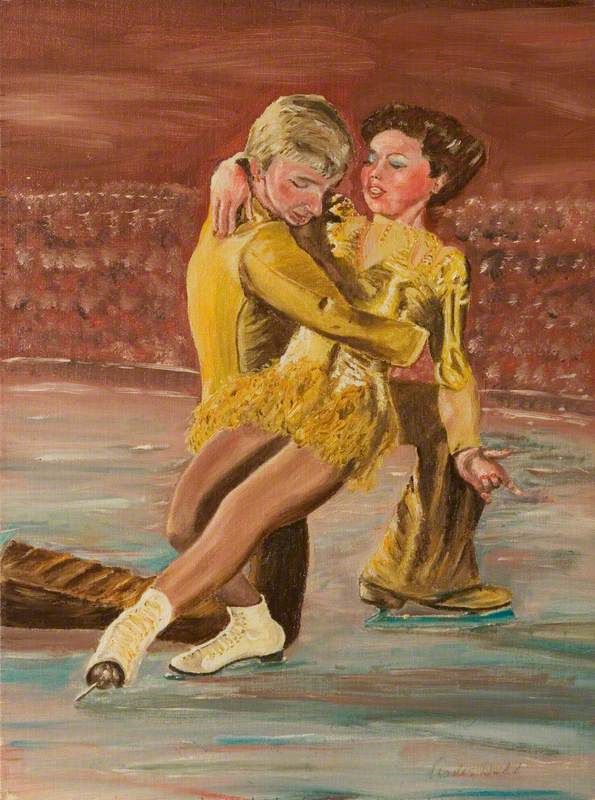
Jane Torvill and Christopher Dean, Ice Dancing was painted by Charles J. B. Dodd in 1984, which was a fateful year for both the painter and his subjects.
For Torvill and Dean, it was the year they won Olympic gold after earning a full set of perfect scores for artistic impression with their groundbreaking 'Boléro' routine. It was also the year they became the only athletes ever to share the award for BBC Sports Personality of the Year. Sadly, for Dodd, 1984 was less fortunate: it was the last year of his life.
Alongside Torvill and Dean, there are several other figure skaters in paintings available on Art UK.
The woman in Lady Skating on Ice by Ludovico Marchetti is as elegant as any Olympian, if a little overdressed by the standards of present-day figure skating.
Reverend Dr Robert Walker (1755–1808) Skating on Duddingston Loch
1795
Henry Raeburn (1756–1823) 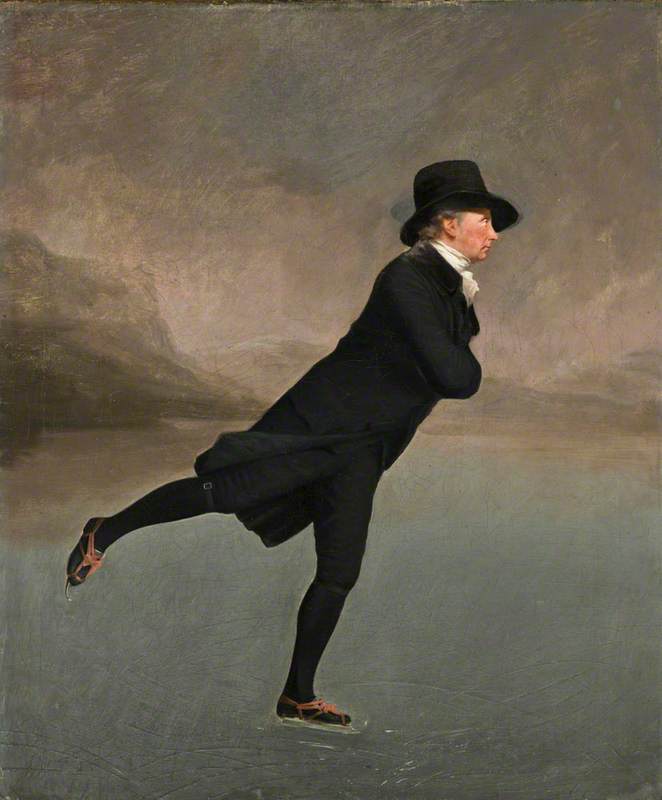
Meanwhile, Reverend Dr Robert Walker (1755–1808) Skating on Duddingston Loch by Henry Raeburn and Friesland Boor Skating by Henry Hainsselin introduce us to two sprightly male skaters. The one in Hainsselin's picture is so adept he can skate while smoking a pipe. Not even Torvill and Dean managed that.
Alpine skiing
Along with figure skating, alpine skiing is surely the sport most commonly associated with the Winter Olympics: the men's and women's downhill races are generally considered the Games' blue riband events.
In Wengen Station, Millicent Emily Ayrton opts not to show us downhill racers in action. Instead she shows skiers arriving in the Swiss alpine resort of Wengen, which is renowned for hosting one of the world's most highly attended winter sports events: the annual Lauberhorn ski races.
Wengen Station, Switzerland
c.1955
Millicent Emily Ayrton (1913–2000) 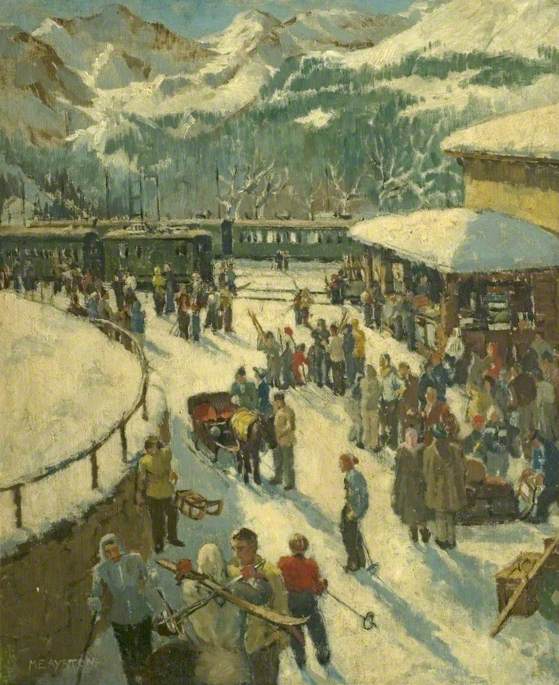
It's a busy scene, with the skiers amassed in the foreground made tiny by the looming mountains in the background. That contrast underlines that many winter sports are battles not just against other competitors, but against harsh and hazardous terrain.
Snowboarding and freestyle skiing
Stan Brooks's three-part work Winter of the Three showcases two of the flashiest and most exciting winter sports, both of which are – compared to the likes of figure skating and alpine skiing – relatively new additions to the Games. Freestyle skiing was added to the Olympics in 1992 and snowboarding was added in 1998, in an effort to appeal to younger audiences.
In Winter of the Three, the precarious positions of the figures (one is completely upside down) emphasise the spectacular risks competitors in these extreme winter sports take in pursuit of Olympic success, as do the titles given to each of the three component sculptures: 'Big Air', 'Back Flip' and 'Going for Gold'.
Just as noteworthy as the sculptures themselves are the material they were made from and the reasons for their construction. Working with ten tonnes of steel chain donated by a Rotterdam shipyard, Brooks sculpted Winter of the Three in 2014 to commemorate both the half-centenary of winter sports taking place on the Cairngorm mountains and the efforts Clydesdale shipyard workers made to build the mechanical ski tows that operate there.
Biathlon
Works such as Jane Torvill and Christopher Dean, Ice Dancing and Winter of the Three show winter sports exactly as they are performed at the Olympics, but the majority of artworks that depict winter sports show the activities that developed into official Olympic sports being undertaken either for fun or from necessity.
In Duck Shooting in Winter by Henry Thomas Alken, we see a man using a skill – rifle-shooting in the snow – that, along with cross-country skiing, is one of the two tested in the Winter Olympic biathlon.
Biathlon developed from the military manoeuvres Scandinavian nations stage in the snow. In fact, when the sport debuted at the first Winter Olympics in 1924, it was known not as biathlon but as 'military patrol'. Happily, however, participants now take aim only at targets and do not shoot at each other – or defenceless ducks.
Cross-country skiing
Alken's Duck Shooting in Winter shows us one of the disciplines in biathlon and Peter Doig's Girl on Skis shows us the other. In this oil painting, created in 1997, we see an example of cross-country skiing – which, as well as being one half of biathlon, is also a Winter Olympic sport in itself.
While alpine skiing is the Winter Olympic equivalent of sprinting at the Summer Games, cross-country skiing is the Winter Games' equivalent of long-distance running. It rewards stamina, perseverance and a high tolerance for cold conditions.
We can't see the expression on the face of the girl in Doig's picture – she is too well wrapped up against the icy weather – so we can't know what she is thinking. But she appears to be paused midway through a long trek, resting on her ski poles and looking out at the expanse of uneven and unforgiving snow ahead.
It is, I'm sure, a situation familiar to anyone who has trained to compete as a cross-country skier.
Ice hockey
Many ice hockey aficionados know that Canada won six of the first seven Olympic gold medals for ice hockey. But, even in the UK, many don't recall that, in 1936, Great Britain won the other.
Two similarly titled pictures preserve images of British ice hockey from the period when its players could compete with any in the world.
Ice Hockey at the Westover Ice Rink, Bournemouth
1920–1940
Henry George Gawthorn (1879–1941) 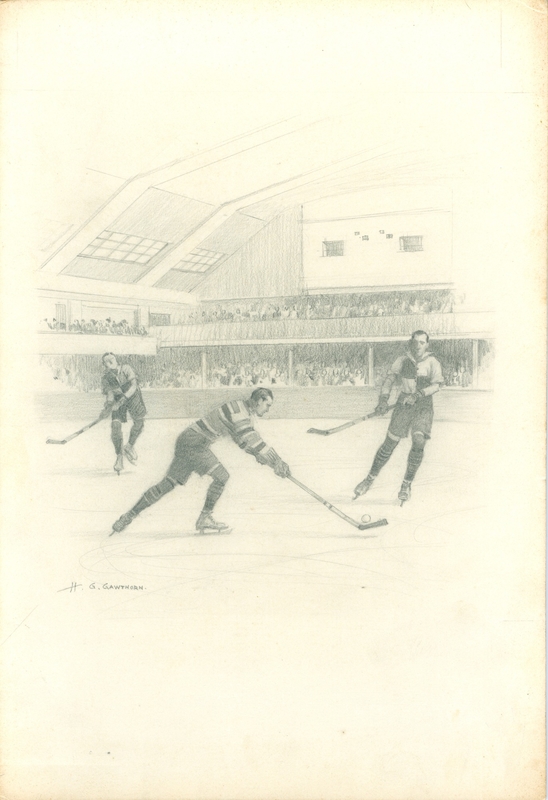
Dating from between 1920 and 1940, Ice Hockey at the Westover Ice Rink, Bournemouth by George Henry Gawthorn is a monochrome composition in pencil and watercolour that shows players wearing jerseys and shorts that today we would be more likely to associate with a game of rugby.
Painted in 1952, Ice Hockey at the Empress Hall by Robin Darwin presents a more colourful scene, and one that more closely resembles contemporary ice hockey.
We have to inspect the picture closely to see that the players are not wearing helmets, as rules require them to do nowadays, and to notice that the rink is missing the plexiglass surround that protects twenty-first-century spectators.
The style of play, too, seems more modern in Darwin's painting. While Gawthorn's players look poised but somewhat sedate, Darwin's are frenetic and obviously intent on collision.
Sledding
The Winter Olympics features several forms of sledding: bobsleigh, luge and skeleton are all officially considered separate sports by the International Olympic Committee and, at the Games, each of those sports is divided into various events, from the famous four-man bob, to the new Olympic discipline of women's monobob, to the always eye-catching doubles luge.
Sledging in the Howe in the 1940s
(study)
William John Connon 
Sledging in the Howe in the 1940s by William John Connon shows sledding as most of us first experience it: as childhood play conducted wherever a sufficient amount of snow has fallen on a steep enough incline.
The picture's title, and its subject, suggest nostalgia but the painting itself is unsentimental. Most noticeable are its angular shapes in three distinct colours. We see white snow, cream-brown buildings, and blackish shadows. Within the neat geometry of Connon's composition, the sledding children are almost incidental.
Winter Scene with Sledges and Skaters on a River
1656
Salomon van Ruysdael (c.1602–1670) 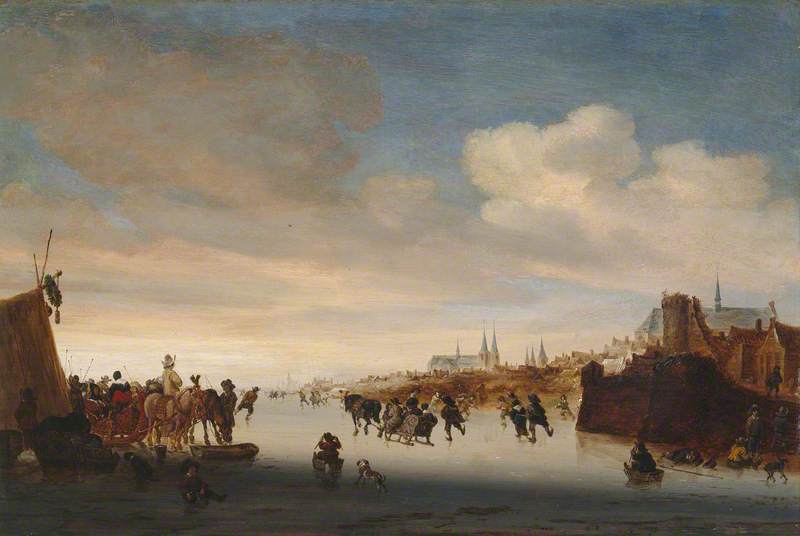
Winter Scene with Sledges and Skaters on a River by Salomon van Ruysdael features sleds of different sizes being pulled across a vast frozen river by appropriately sized animals.
In Skating Scene, which is attributed to Andries Vermeulen, it is not the titular skating that draws our attention but two rather rickety wooden sleds. Designed to be ridden in by children and pushed from behind, they look like low-budget bobsleighs for beginners.
Winter Scene with Skaters
c.1783–1814
Andries Vermeulen (1763–1814) (attributed to) 
Adrian van de Velde's Winter Scene with a Group of Golfers on a Frozen River features a similar sled being pushed across another frozen river. But it also features a group of men engaged in a more unusual winter game: golf.
Winter Scene with a Group of Golfers on a Frozen River
Adriaen van de Velde (1636–1672) 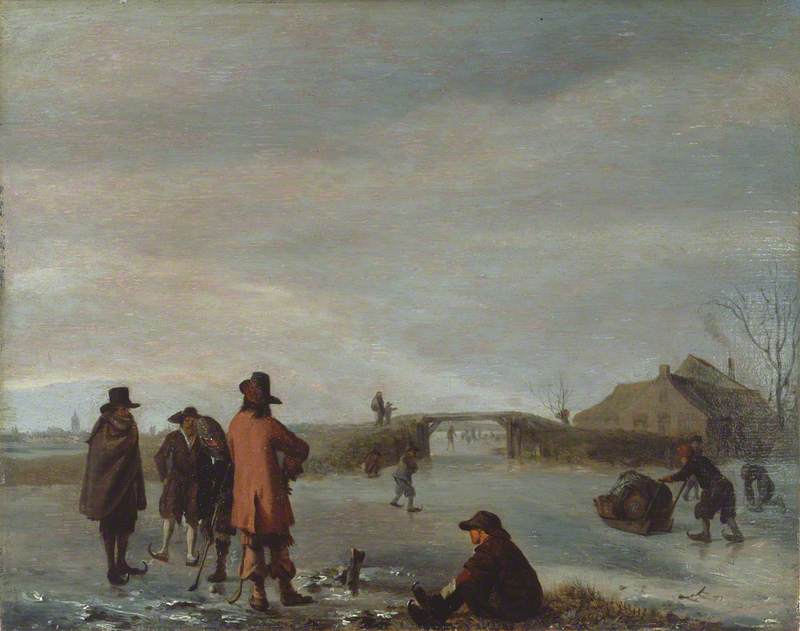
Doubtless, water hazards are less likely to swallow up a golf ball when they are frozen over, but they seem considerably more likely to swallow up a golfer, so perhaps it is for the best that golf on ice never evolved into an Olympic sport.
Speed skating
Skating Scene with Numerous Figures on the Ice and an Island Fort
Antoni van Stralen (c.1594–1641) 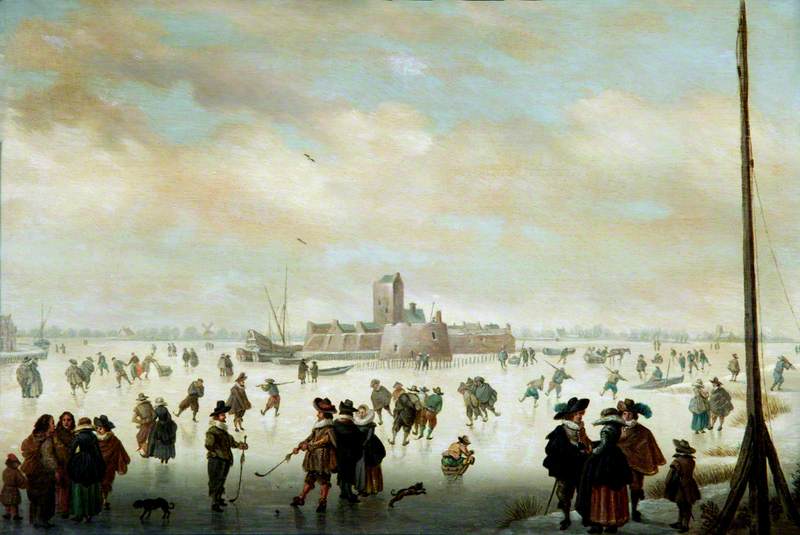
Search Art UK for winter sports and one will appear far more often than any other: skating. Besides the paintings of figure skaters, from Torvill and Dean to the Reverend Dr Robert Walker, there are dozens of images of people skating a little less artistically.
Many of the crouched figures gliding across Skating Scene with Numerous Figures on the Ice and an Island Fort by Antoni van Stralen look to be aiming for speed rather than style.
Skating Scene: Figures on a River Flowing through a Village
Aert van der Neer (1603–1677) (imitator of) 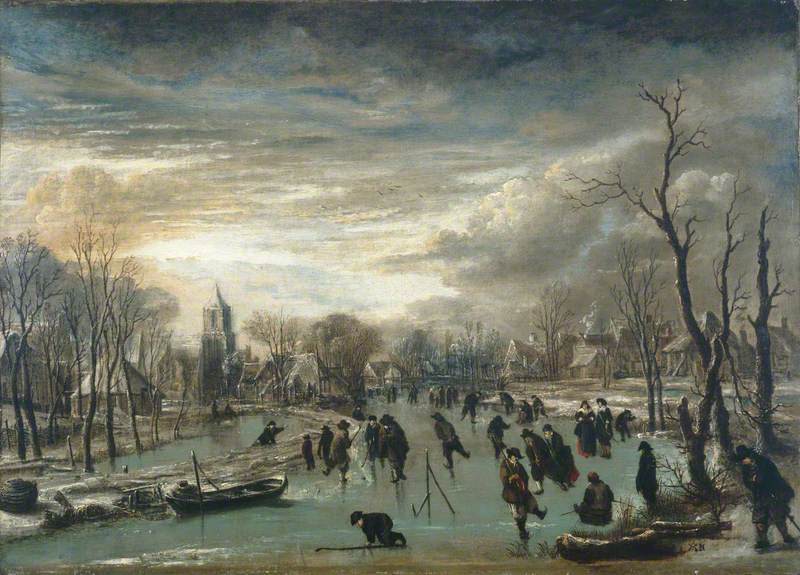
So too do several of the skaters in two other paintings: Skating Scene: Figures on a River Flowing through a Village, which is by an imitator of Aert van der Neer, and Frozen River by a Town at Evening, which is by Van der Neer himself.
A Frozen River by a Town at Evening
about 1665
Aert van der Neer (1603–1677) 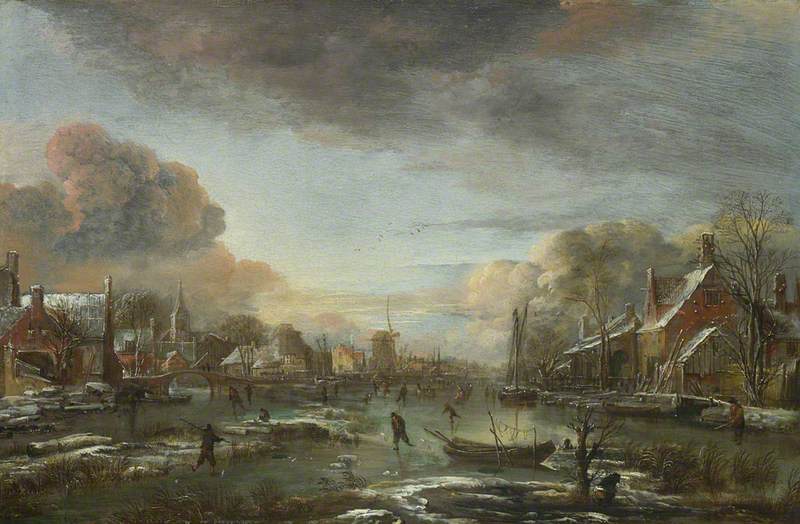
It is fitting that van der Neer was a Dutch artist: having won 121 medals, 42 of them gold, the Netherlands is by far the most successful nation in the history of Winter Olympic speed skating.
Curling
It is also fitting that most of the paintings of curling that are available on Art UK are held in Scottish collections. Curling was invented in Scotland and the teams that represent Great Britain at the Winter Olympics – such as the one skipped to a gold medal by Rhona Martin at the 2002 Games in Salt Lake City – are usually composed entirely of Scots.
Both Curlers on Kilconquhar Loch by John McGhie and Curling at Carsebreck by Charles Martin Hardie demonstrate how seriously the sport has long been taken in Scotland. McGhie does this by showing the intensity of the concentration among a small group of curlers, while Hardie's densely populated picture shows the crowds of players and spectators the sport attracts.
Although the brooms used in curling have changed greatly from the (to us) comically archaic ones depicted by McGhie and Martin, curling stones seem to have changed little.
And it is curling stones, not games of curling or the people playing them, that are the focus of John Elliot Maguire's Curling Stone Workshop.
Viewed today, Maguire's scene, which was painted in the late nineteenth century, is a reminder of both the long history of curling and the work of the old-fashioned artisans and modern equipment manufacturers who, along with the athletes and administrators, have made the Winter Olympics possible for the last 98 years.
Scott Jordan Harris, arts journalist
